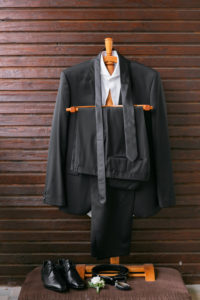 Print this Article
Print this Article

Parasha & Halacha Shiur Summary by Rabbi Yehoshua Sova
The Midrash Rabba in Rut says that Hashem has mercy over someone who must be afflicted with Tzara’at, and therefore the Tzara’at first appears on the house, then on the clothing, and finally on his own body. We see the importance of clothing, which stand between a person and affliction, as the Gemara refers to clothes as Mechabduta – that which respects a person. Similarly, if the Kohen in the Bet HaMikdash would not wear all of the required clothing his service would be invalid.
Hacham Ovadia was asked in Yehave Da’at (1:23) whether one is required to buy a special pair of shoes for Shabbat. He discusses whether shoes are considered an article of clothing and must therefore be special for Shabbat like one’s clothes. One of the proofs he cites is the Yerushalmi that states that as respect to one’s parents one must clothe them and give them shoes. This would imply that they are different items. It may be, however, that the Berayta is just detailing the various acts of Kibbud Av Va’Em, as we find in various places. The Ben Ish Hai proves from Birkot HaShahar in which there is a separate Beracha for clothing and for shoes, but concludes that perhaps the Beracha of Malbish Arumim is a special Beracha that one is not completely naked.
In another Teshuva (Yehave Da’at, 3:67) Hacham Ovadia was asked whether one can sell immodest clothing at his store. After explaining the severity of dressing immodestly, Hacham Ovadia says that it is still permissible, since these clothing are available elsewhere, and the one’s who dress immodestly have become accustomed to doing so (mumar l’davar echad), and that the clothing can technically be worn in a permitted fashion (with other clothing over them).